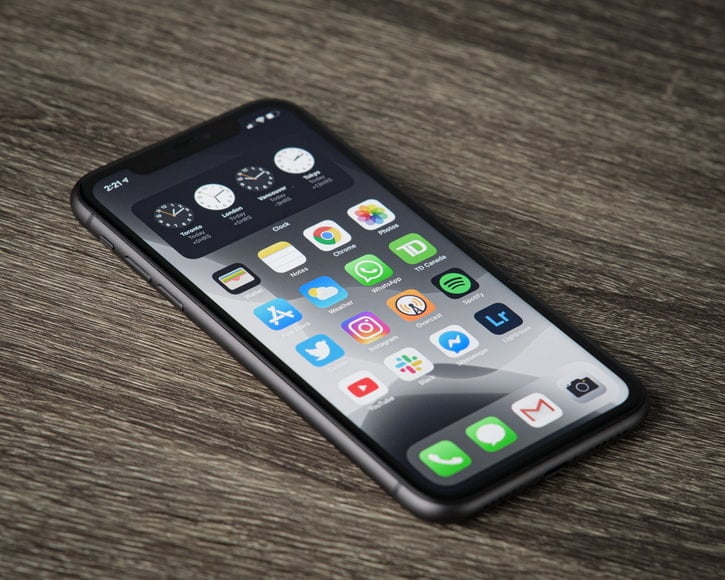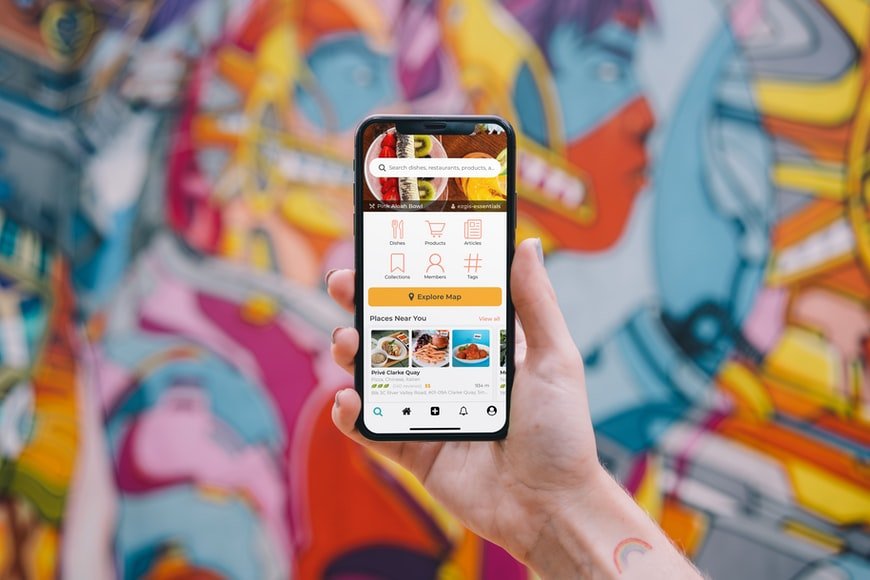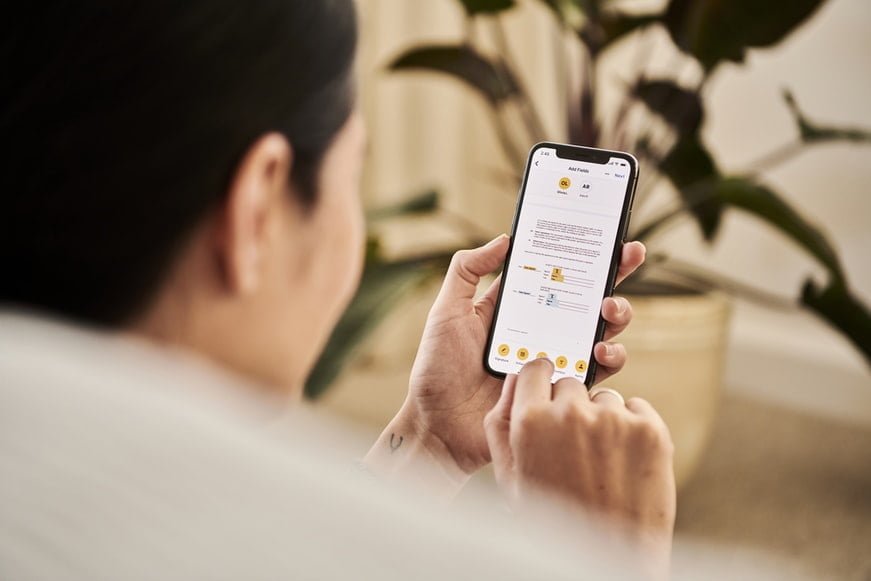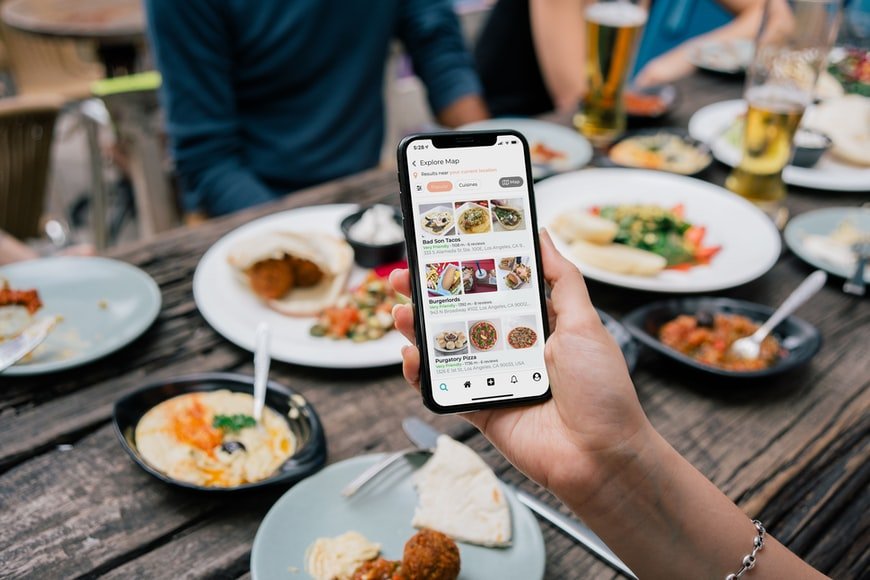10 Trendiest Mobile App Designs for 2022
by Abdul Aziz Mondal Technology 18 February 2022

“Evolution is the secret to the next step,” Karl Lagerfield’s simple quote wonderfully highlights the constant need of humans to move to the next New Thing.
Among all of the technology that surrounds us today, mobile applications are the ones that are evolving the fastest, so why should the UI/UX remain the same? Due to fast internet connectivity and faster processing chips, app development companies no longer have to worry about heavy mobile app design graphics in their apps that might slow down the efficiency of the app.
To shed more light on this, we have listed the top 10 mobile app design trends that are being positively welcomed by the global audience:
Trendiest Mobile App Designs For This Year:
1. Less is More- Go, Minimalist
The first concept that pervades all new and updated app design is minimalism, which in one sense reflects the offline trend amongst the general population, less is more.
Across the world, app designers are adhering to the principle of removing all unnecessary distractions from their mobile app designs in order to provide a more simple, clean, and minimalist appearance. Minimalist mobile app designs help users to easily identify the core functions and content in addition to easing the strain on the eyes, a common side-effect of all screens we have access to.
A popular example of this UI style is Instagram. The core functionality of the app is to share and like content in pictorial format instead of text-heavy social media posts and considering its global popularity, it does so excellently.
2. Designs that imitate real-life- 3D Graphics
With most devices and countries hopping onto the 5G connectivity wagon, app designers can shed their worry of slow-loading designs on phones. 3D graphics have now been dominating the visual content space for quite some time, in theaters, televisions, and now on mobile applications.
The most famous example of this technology is interactive mobile games like PUBG or the sensational Pokemon Go that took the gaming community to another level.
In addition to that, 3D graphics are being used in many hiking and terrain scaping apps to display for users a more precise view of their pathway, highlighting just how wide its application can be made by creative mobile app developers.
3. Stimulate through AR
Augmented reality has managed to ease the gap between the digital world and reality by making digital content accessible in a more realistic way.
AR applications allow users to test products or scenarios more intimately and evaluate their options without actually buying, or trying the products in real life. Factoring in the wide variety of verticals where AR designs could significantly improve user experience with just their mobile camera, app designers need to jump on this bandwagon of innovation.
Many E-commerce platforms, such as IKEA, have already integrated AR into their apps, so customers can try on their products, and instead of imagining how it would fit and look in their home or office space, they can actually visualize it through the app before making the purchase. This has led to soaring customer engagement for companies.
4. More than one perspective- Split Screen
With mobile phone giants bringing back foldable phones and wider screen options for mobile devices on top of tablet devices of varied sizes, app designers need to accommodate the rising trend of folding and split-screen designs. Phones can now function as mini laptops and open picture-in-picture functions which minimizes the app window while opening another app and allowing users to operate both apps simultaneously.
A more vibrant and dominant color scheme and formatting are required to capture the user’s attention for proper interface interaction while using split-screen functionality for bigger screens or preview screens. Food delivery apps are a great example of this wherein they display the tracking window map in picture-in-picture mode after you exit the app.
5. Design for new possibilities- Wearables
Going through a seemingly never-ending pandemic, the public has grown overly conscious of their health and bodily functions. According to reports by Cisco Systems, the number of wearable devices is expected to increase to 1,105 million by 2022. ‘
The changing lifestyle of the general public has brought a massive surge in more efficient and precise health tracking apps that can be connected to wearable devices on any part of the body. Starting from monitoring user heart rates and other body functions, wearable devices are allowing app designers to venture into areas such as gamification and VR as well.
Apple watches, which are an excellent example of wearable technology, come in different mobile app designs and upgrades every season to intrigue users into purchasing and flaunting the latest tech in the market.
6. An step of security- Biometric Login
For upgraded security, many apps have switched or added the function of biometric login. Password authentication does not provide enough security these days where it can be engineered or hacked through the social information of the user.
Mobile devices are already compatible with biometric logging features so when an app introduces this additional security feature, your saved biometric data is automatically shared with the app.
With the rising popularity of mobile banking, banking apps have updated their UI to accommodate biometric login authentication to avoid breaches of data or unauthorized access. A lot of users might find this way more convenient than remembering passwords and PINs.
7. Breathe life into your Design through- Animations
Interlinked with 5G and faster core processors in mobile devices, animated logos, and micro animations are making a major comeback in app design. The Metaverse logo is the most recent proof of this concept. Animation in design makes the content more immersive for users while keeping it to the point.
Paired with 3D designs and motion graphics, this UI trend is definitely one to look out for in the upcoming year. Apps use animation in micro functions like page loading progress bar or circle or displaying the success or failure of a function as visual feedback. A more common recollection of this feature is when you get cashback points from any mobile wallet transaction like Paytm.
8. Immersive Mobile App Designs- Virtual Reality
The completely immersive experience that Virtual Reality apps provide with full headset gear drives higher user engagement. The novelty of designing a 360-degree field of vision can be a new change that app designers can look forward to and grow their graphic and motion design skills.
VR transports users into a new virtual reality space letting them experience new surroundings and instigating their cognitive senses. It is being heavily used in games to increase gamer engagement.
Recently, big companies like Audi and Toyota have been using VR to let customers view the interiors of their new car models before officially launching them in the market. They use 3D cameras along with narration to give a surrounding experience.
9. Go Dark
A very simple reason for the popularity of Dark mode is the practicality of this feature. With the general public spending more and more of their free time on the screens of their mobile phones, app designers have adapted this feature to reduce the strain bright light has on the eyes.
A hectic work schedule often leads to reverse procrastination meaning more of the sleep time at night is spent on the phone and on social media as ‘Me’ time. All the major social media apps like Twitter, Whatsapp, and even Google to name a few have adopted dark mode features.
Switching to dark mode on your phone or on an app hardly takes a second of transition time and your eyes quickly adjust to the low strain, causing fewer headaches and higher time spent on your phone.
10. Tell a Story
Using storytelling in your app design lets users develop an emotional connection with the content and function of your app. It drives higher engagement than simply narrating the functionality of your app or its features.
Storytelling adds a dash of creativity while presenting essential information to users and keeps them scrolling through to get to the next part.
Another pro of this design trend is that it breaks down more complex ideas into smaller bits of information that when paired together with animation can have better effects on the user experience than a less interactive version of the same content. Using this design trend you can illustrate the use of the app as an interesting journey for the user than mindless scrolling.
Conclusion
To wrap up, if you are a budding designer, a common observation for all the evolving mobile app trends is to provide an enhanced and engaging user experience. Most of the mobile app design trends mentioned above are a continuation of the ongoing trends followed by app designers, however, that doesn’t limit their usefulness in the coming future but rather highlights their success in capturing user attention. Design trends evolve to integrate a seamless interaction between the users and the app for optimum engagement and communication. Hence, Innovation and creativeness are what ultimately drive app designers to differentiate themselves in the industry.
Read Also:








































































































